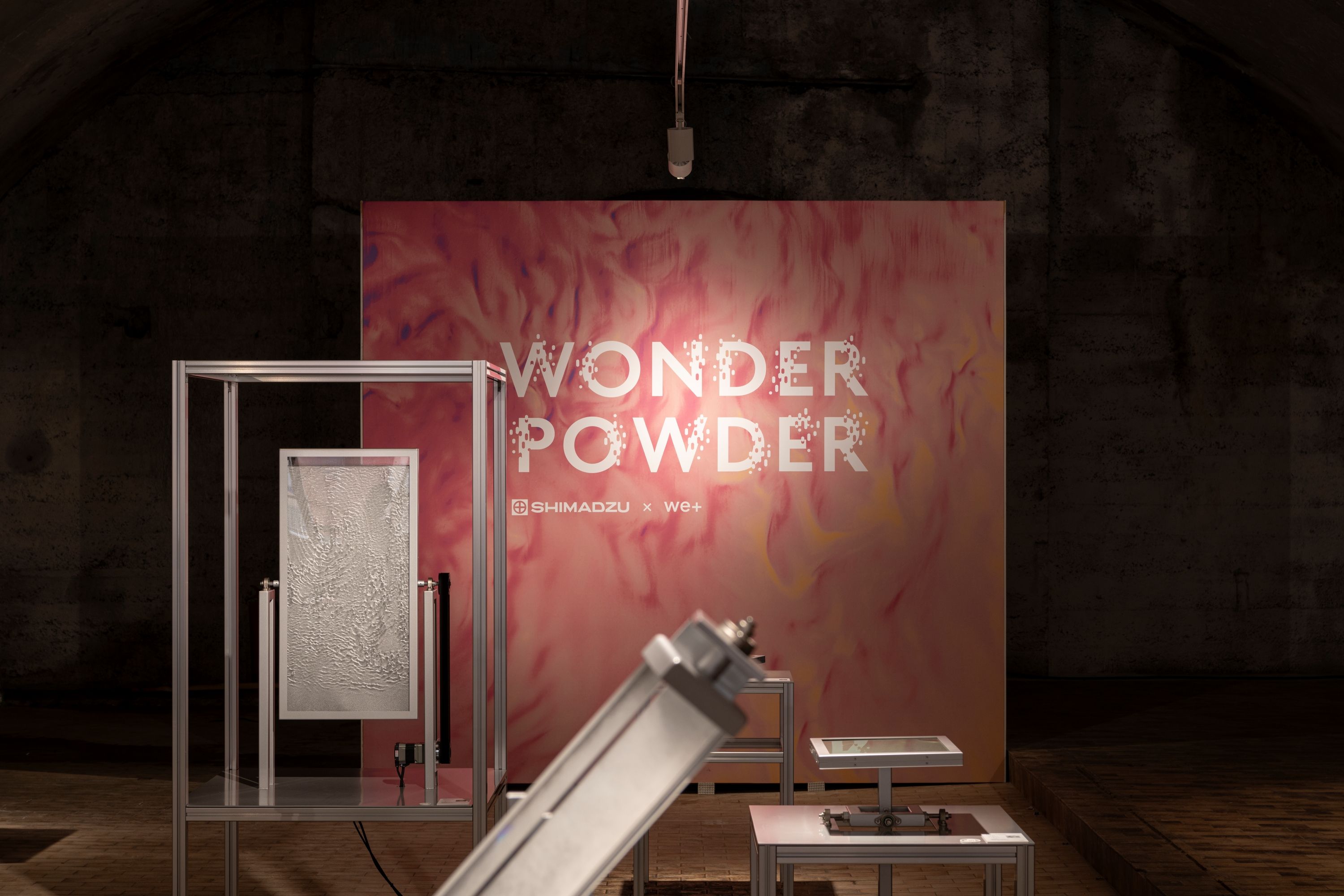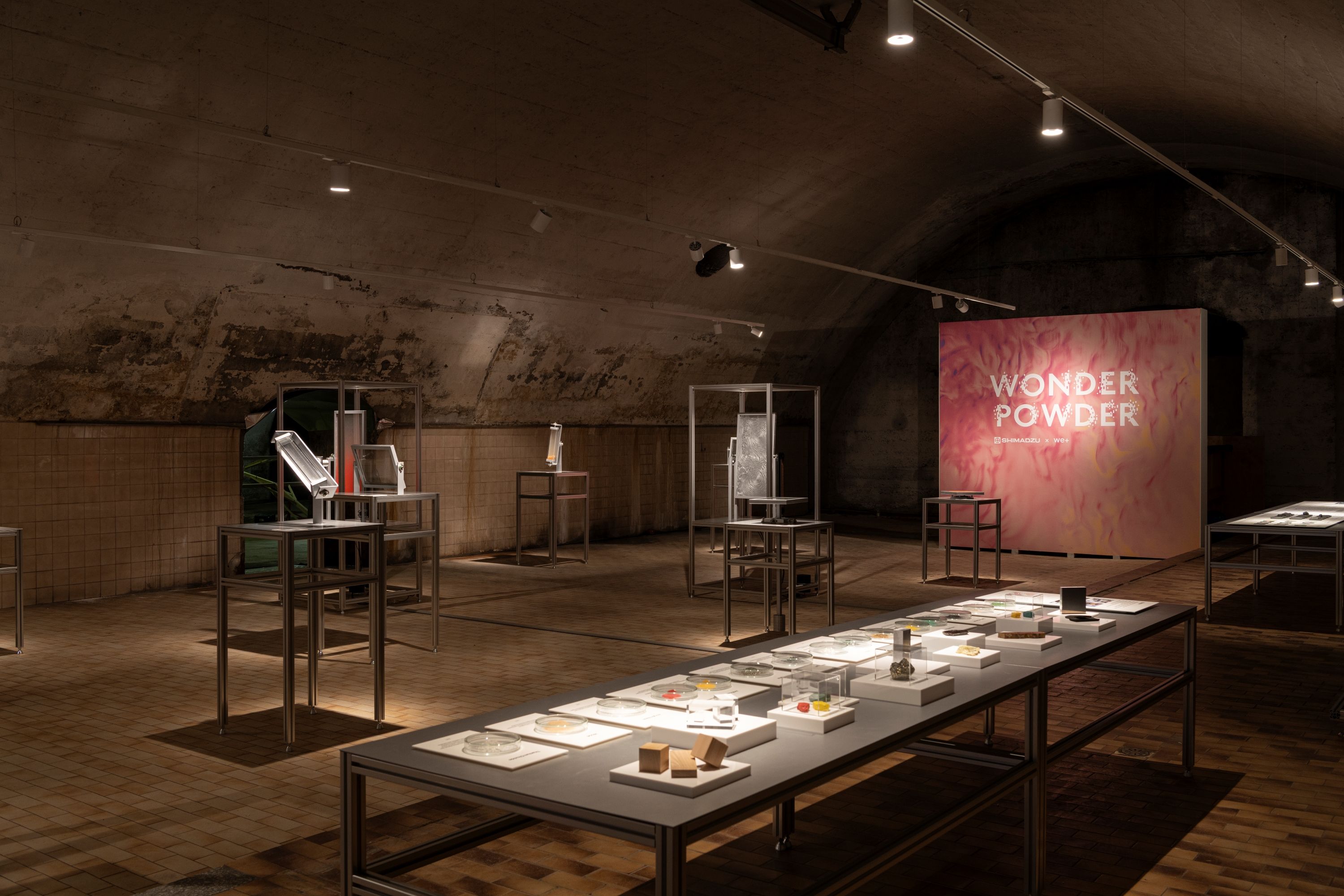Chromatography and Art Collide at Shimadzu Exhibit in Milan
A 10-day exhibit at Milan Design Week in Italy is drawing to a close, but Shimadzu hopes that visitors have recognized the link between science and technology, and art and design.
Through April 21, Shimadzu Corporation is presenting work related to the company’s main technology, chromatography, in a new way for the first time.
Wonder Powder | Image Credit: © Shimadzu

An exhibit called “Wonder Powder” is being shown at the Dropcity venue of the Milano Centrale train station in Milan, Italy as part of Milan Design Week, the world’s largest design event that encompasses two simultaneous demonstrations, Salone del Mobile.Milano and Fuorisalone (Milan Design Week) (1). Sunday brings a close to the 10-day presentation by Shimadzu, marking the company’s first foray into this annual showcase.
Shimadzu said the exhibit is the culmination of a two-year research project with We+, a design studio founded in 2013 that specializes in “using methods based on research and experimentation” (1). And in Milan over the past week and through this weekend, that is what visitors to Wonder Powder have gotten to experience—a potential maximum of 300,000 people from around the globe.
According to Shimadzu, Wonder Powder has been designed with the following hands-on strategy in mind:
- In a magnified representation of the sample preparation and chromatographic processes, powdered, raw materials are sent downward through acrylic cases that are filled with water;
- These cases can be rotated by spectators;
- The resulting gradation patterns are affected by differences in powder size, weight, and shape, which in turn inform the sedimentation rate.
(Read LCGC International “LC Troubleshooting” columnist Dwight Stoll’s recent multi-part series on gradient delay volume [GDV] Part 1, Part 2, and Part 3.)
Analytical results are displayed next to each case. Shimadzu said it used the company’s energy dispersive X-ray fluorescence (EDX) spectrometer, its SALD series particle-size analyzer, and a scanning probe microscope (SPM), in partnership with Shimadzu Techno-Research, to analyze the powders (1).
Wonder Powder | Image Credit: © Shimadzu

A press release issued in March by Shimadzu said that the goal of the exhibit, beside increasing the manufacturer’s brand recognition, was to marry art and design with science and technology, sparking interest in the latter two fields. Shimadzu’s dedicated webpage to Wonder Powder goes further, calling the experiment a “dual approach of sensory and logical exploration” (2).
“Powdering is one of humanity’s most primitive processing methods,” the page says, going on to talk about the “potential” and “beauty” of powder. “In this exhibition, we showcase some research findings and installations as part of the project, attempting to capture ‘beauty’ from a new perspective.”
For more on Milan Design Week, which, like Wonder Powder, ends Sunday, visit this link: https://www.salonemilano.it/en.
References
(1) Exhibition of Hands-on Works on the Theme of Integrating Art and Science First Exhibit at Milan Design Week 2024, the World’s Largest Design Event. Shimadzu Corporation, 2024. https://www.shimadzu.com/news/2024/xkmacpdtc4b6r1zv.html (accessed 2024-04-19).
(2) Milan Design Week 2024 | Shimadzu Corporation – Wonder Powder. https://www.shimadzu.com/research_and_development/design_strategy/milan/ (accessed 2024-04-19).
Vitamin D Determination Tested Using Liquid Chromatography–Tandem Mass Spectrometry
May 2nd 2024Scientists from Hangzhou Medical College recently recorded the effectiveness of novel quality control strategies for the determination of vitamin D using liquid chromatography–tandem mass spectrometry (LC–MS/MS).